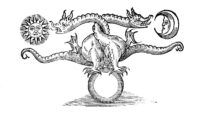People love stories, particularly melodrama. Thus television programs like “Downton Abbey,” the mini-epic about changing manners and society set within a grand estate in the London countryside is less history than soap opera. Scriptwriters plot their dramas in terms of “narrative arc,” casting characters against events which serve to reveal personalities. Though Downton Abbey can be viewed as insight into class-change in early 20th century English society, it’s perhaps more relevant as melodrama; did Mr. Bates murder his wife’s rapist?
Our conception of social narrative is misplaced; our love of stories is inherently more mythative than narrative. Narrative implies linear structure, and real life is anything but linear. Though we work hard to impose the logic of simple cause and effect to daily life, it comes at the cost of discarding truth. Life simply is not simple and the forces and factors contributing to each moment comprise an incomprehensible complexity which sensed in its wholeness immediately assumes the character of chaos.
Imposing order upon chaos is uniquely human. In order to do so we must abstract reality into discreet forms, separating an inherently unified continuum into segments of time and creating names to match an infinite number of events and objects. Our exceptional talent for this has resulted in the replacement of totalistic awareness with segmented, point-of-view perspective. Thus the novelist or scriptwriter’s plot is vague and inconvenient at the risk of confusing and losing readers. Accordingly, our habituation to linear narrative facilitates simplistic thinking and the easy manipulation of feelings and ideas.
Our primary social narratives present narrow points of view; history, it’s said, is written by the victors. Narrative requires matching itself to patterns and facts of present experience and reinforcing those bonds, creating a closed moral loop of story. For example, the narrative of George Washington admitting to chopping down a cherry tree as a boy gets connected to the idea not telling lies as a manifestation of American morality. This is not history, it is image making, and in that sense is social mythology, not narrative.
One theory of classical mythology includes it’s creation in the face of the unexplainable. Natural forces of unexplained origin were anthropomorphized and given form. Similarly, new technologies or ideas were incorporated into myth, Prometheus stealing fire from the gods, for example. Our contemporary rejection of myth in favor of narrative mirrors western culture’s preference for linear thinking.
As noted, however, reality is not linear and human society is challenged by a new reliance on a globalized information network which effectively reestablishes holistic thinking. Thus we have returned to full-fledged myth-making in a modern attempt to grapple with our growing awareness of totality. Whether a miracle weight-loss pill, all-encompassing political ideology or ten secrets to a happy marriage, we increasingly find mythative more seductive than narrative. We can observe this in the world of car advertising on TV, which is increasingly dream-like and hallucinogenic; cars are not being sold in narrative style but mythic.
Poet T.S. Eliot described myth as “parallels without connectives,” which is to say image making, not fact matching. This propensity is evidenced today by billions of cell-phone camera images and the conflating of consumer with creator. As the truth of inter-connectedness works its way back into consciousness, social mythative will increasingly replace social narrative.





Be First to Comment